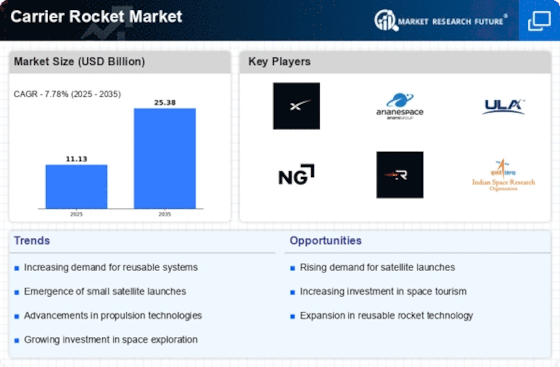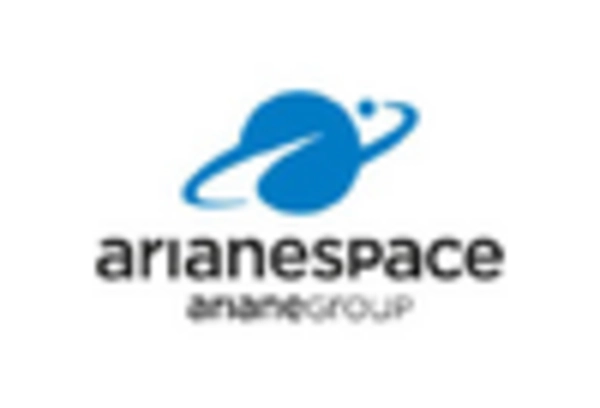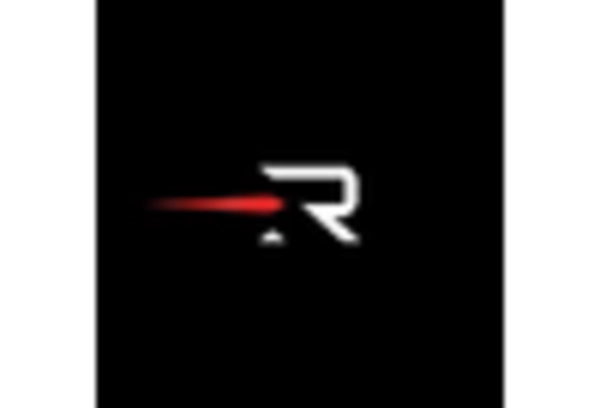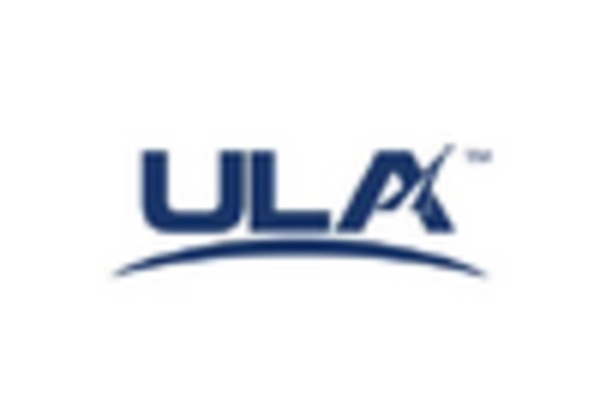Rising Demand for Satellite Deployments
The Carrier Rocket Market is witnessing a notable increase in demand for satellite deployments, driven by the proliferation of satellite-based services. The growing need for communication, Earth observation, and navigation satellites is propelling the market forward. Recent statistics suggest that the number of satellites launched annually has increased, with projections indicating a continued upward trend. This demand is further fueled by the expansion of the Internet of Things (IoT) and the need for global connectivity. As countries and private entities invest in satellite technology, the Carrier Rocket Market is poised to benefit from this trend, as reliable launch services become essential for meeting the growing requirements of satellite operators.
International Space Exploration Initiatives
The Carrier Rocket Market is significantly influenced by international space exploration initiatives. Various countries are investing in ambitious space programs aimed at exploring celestial bodies, which necessitates the development of advanced carrier rockets. For example, missions to Mars and lunar exploration are driving the need for heavy-lift launch vehicles capable of carrying substantial payloads. The collaboration between nations on space missions is also fostering a competitive environment, leading to increased investments in launch capabilities. Data indicates that the space exploration budget for several countries is on the rise, suggesting a robust future for the Carrier Rocket Market as these initiatives unfold.
Emergence of Small Satellite Launch Services
The Carrier Rocket Market is adapting to the emergence of small satellite launch services, which cater to the growing demand for deploying smaller payloads. The rise of small satellites, often referred to as CubeSats, is reshaping the launch landscape. Companies specializing in dedicated small satellite launch vehicles are gaining traction, offering cost-effective solutions for satellite operators. Recent market analysis indicates that the small satellite launch segment is expected to grow at a rapid pace, driven by the increasing number of startups and research institutions entering the space sector. This trend is likely to diversify the Carrier Rocket Market, as it accommodates a wider range of payload sizes and mission profiles.
Technological Advancements in Launch Systems
The Carrier Rocket Market is experiencing a surge in technological advancements that enhance launch systems. Innovations in propulsion technologies, such as the development of more efficient engines, are likely to reduce costs and improve payload capacities. For instance, advancements in liquid and solid rocket fuels are enabling higher performance and reliability. The integration of artificial intelligence and automation in launch operations is also streamlining processes, thereby increasing launch frequency. According to recent data, the market for advanced propulsion systems is projected to grow significantly, indicating a robust demand for innovative solutions in the Carrier Rocket Market. These technological improvements not only enhance operational efficiency but also attract new players, further stimulating market growth.
Increased Government Funding for Space Programs
The Carrier Rocket Market is benefiting from increased government funding for space programs across various nations. Governments are recognizing the strategic importance of space exploration and satellite technology, leading to enhanced budgets for space agencies. This funding is often directed towards the development of new launch vehicles and the enhancement of existing capabilities. Recent reports indicate that several countries have announced substantial investments in their space sectors, which is expected to stimulate growth in the Carrier Rocket Market. As government initiatives expand, they create opportunities for collaboration with private companies, further driving innovation and competitiveness in the market.

















Leave a Comment